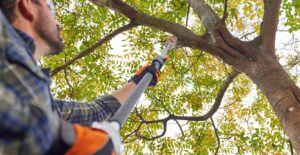A Comprehensive Guide to Free and Low-Cost Services for Senior Citizens in New York City
Tree removal can be both costly and challenging for senior citizens living in New York City (NYC), especially those on a fixed income or with mobility issues. Aging trees can pose safety risks, cause property damage, and require immediate attention. Fortunately, NYC has several resources, programs, and services available to support seniors in need of tree removal, whether it’s an emergency, for safety, or for general property maintenance. This guide aims to provide comprehensive and practical information about free and low-cost tree removal options for seniors, including government programs, non-profits, emergency services, and professional agencies that can assist.
Why is Tree Removal Important for Seniors?
Trees are essential for urban ecosystems, providing shade, beauty, and environmental benefits. However, they also require regular maintenance. For senior citizens, particularly those on limited incomes or with health concerns, the cost and effort of removing or maintaining trees can be burdensome.
There are several reasons why tree removal may become a necessity:
- Safety Hazards: Dead, damaged, or diseased trees can be a serious safety risk to homes, public walkways, and vehicles. Seniors may face difficulty in addressing these hazards quickly, making it necessary to seek assistance.
- Property Damage Prevention: Falling limbs, roots encroaching on the foundation, or trees growing too close to power lines can result in significant property damage. Addressing these risks proactively is crucial to prevent future issues.
- Accessibility & Maintenance: For seniors who may have mobility or health issues, maintaining trees themselves is often not possible. Assistance with tree trimming, pruning, or removal ensures safe and accessible home surroundings.
NYC Government Policies and Programs for Senior Citizens
New York City has multiple policies and services designed to support its senior population, ensuring they live safely and comfortably in their homes. Below is an overview of relevant programs and how they assist with tree removal:
1. NYC Department for the Aging (DFTA)
The NYC Department for the Aging (DFTA) is the central organization that provides services to older adults across NYC. DFTA connects seniors to home repair services, including tree removal when it impacts health, safety, or accessibility. Through DFTA’s programs, low-income seniors may qualify for free or subsidized tree removal.
- Contact DFTA: Seniors can call 311 (the NYC government hotline) for more information or visit the NYC DFTA website.
Did You Know? There are approximately 1.7 million seniors (ages 60+) living in NYC, and DFTA serves as a critical hub for connecting this population to various support programs, including home safety assistance like tree removal.
2. NYC Parks – Tree Removal, Pruning, and Maintenance
The NYC Department of Parks and Recreation is responsible for the care of all public trees, also known as “street trees,” in NYC. These are trees found on sidewalks, streets, and other public areas. For any maintenance, removal, or planting of street trees, NYC Parks must be consulted, and permits are required.
- Tree Emergencies and Removal Requests: If there is a hazardous street tree near your home, you can request removal, pruning, or maintenance by contacting 311 or using the NYC Parks Tree Service Request System.
- Cost: Services for street trees are generally free, as they are publicly owned and maintained by NYC Parks.
What is a Street Tree? A street tree is any tree planted on public property or right-of-way, such as sidewalks and streets, managed by the city. If you are unsure whether a tree is a street tree, contact 311 for assistance.
3. NYC Department of Housing Preservation and Development (HPD)
The Department of Housing Preservation and Development (HPD) offers home repair services and funding to low-income seniors in need of urgent repairs, which may include tree removal on private property for safety reasons.
- Home Repair Grants & Assistance: HPD provides grants or loans to low-income homeowners, including seniors, to address emergency repairs that impact health and safety.
- How to Apply: Visit the NYC HPD website to explore available programs or call 311 for guidance on applying for assistance.
Fact: NYC’s housing department is the largest municipal housing preservation agency in the U.S., serving a significant number of seniors who require home repair support.
Free and Low-Cost Tree Removal Services from Non-Profit Organizations
Many non-profit organizations work to support NYC’s senior citizens, providing them with home safety and maintenance services, including tree removal. These programs often cater to low-income seniors and those with disabilities who may not have the means to afford regular tree care.
1. Rebuilding Together NYC
Rebuilding Together NYC is a non-profit that offers free home repairs and safety modifications to low-income seniors and those living with disabilities. The organization aims to improve safety and accessibility in homes, which may include necessary tree trimming, pruning, or removal to reduce hazards.
- Contact Information: Call (718) 488-8840 or visit Rebuilding Together NYC to apply for assistance.
2. New York Foundation for Senior Citizens (NYFSC)
The New York Foundation for Senior Citizens (NYFSC) provides services and resources to enhance the lives of NYC’s older adults, including home maintenance and safety improvements. While their primary focus is on repairs, they may offer connections to tree removal services or partner with organizations that do.
- Contact Information: Call (212) 962-7559 or visit NY Foundation for Senior Citizens for details on their programs.
3. Community-Based Programs and Faith-Based Organizations
In addition to the larger non-profits, many smaller community-based programs, neighborhood associations, and faith-based organizations offer free or volunteer-based tree removal services for seniors. These services are often localized and may operate seasonally or in response to community needs, such as after a storm.
Tip: Reach out to local churches, synagogues, or community centers to inquire about available tree removal or home maintenance programs for seniors.
Tree Removal Helpline for NYC Senior Citizens
If you need help finding tree removal services, support, or have specific questions, you can contact the NYC tree removal helpline for senior citizens:
- Tree Removal Helpline: Call 877-398-6469 for guidance on free or low-cost tree removal services, programs, and resources available for NYC seniors.
Emergency Tree Removal Services for Seniors
In cases of emergency, such as a fallen tree after a storm or a tree posing immediate danger to a home or pedestrian walkway, rapid action is required. Here’s what seniors should do:
- Call NYC 311 for Immediate Tree Emergencies: For any emergency involving a street tree, including fallen branches, split trunks, or hazardous conditions, dial 311 for an immediate response from NYC Parks.
- Emergency Assistance for Private Property Trees: If the emergency involves a tree on private property, seniors may need to hire a professional tree removal service. Some non-profits, like Rebuilding Together NYC, offer emergency home repair assistance for low-income seniors and may be able to provide support.
Professional Tree Removal Services for Seniors
For seniors who do not qualify for free programs or prefer to hire a professional service, here are some options to consider:
1. Licensed Tree Removal Companies
When hiring a tree removal service, make sure to choose a company that is licensed and insured to perform tree work in NYC. Professional tree companies follow safety standards, and using a reputable service ensures that the work is done properly and safely.
- Cost Considerations: Tree removal costs vary based on the tree’s size, condition, and location. Always get multiple quotes and compare services.
- Senior Citizen Discounts: Some companies offer special rates or discounts for senior citizens, so be sure to inquire about potential savings.
2. NYC Parks Forestry Contractors
NYC Parks maintains a list of approved and certified tree contractors who are authorized to perform tree work on city-owned trees. For seniors needing help with a street tree, using one of these certified professionals ensures that the work complies with NYC standards.
- How to Find a Contractor: To find a certified arborist or tree service professional, you can search the NYC Parks website or call 311 for recommendations.
Steps to Apply for Tree Removal Assistance
- Assess the Tree and Identify Location: Determine whether the tree is on public (street tree) or private property. Take photographs and document any hazardous conditions or health issues related to the tree.
- Reach Out to the Right Agency or Organization: Contact 311 for guidance on which department or program to reach out to, whether it’s NYC Parks for street trees, DFTA for senior services, or a non-profit like Rebuilding Together NYC.
- Submit Documentation and Proof of Need: Provide any necessary documentation to support your request, including proof of income, age, or disability if applying for low-income senior services.
- Follow Up for Approvals and Scheduling: Once you have applied for assistance or a permit, follow up as needed to schedule inspections, assessments, and the actual removal or pruning work.
Conclusion
Senior citizens in NYC have a wealth of resources available to assist with tree removal, ensuring their homes and surroundings are safe, accessible, and properly maintained. From
government programs to non-profit organizations and professional services, NYC seniors can access support for free or low-cost tree removal, even in emergency situations.
Helpful Contacts:
- NYC 311 Hotline: For any city service inquiries or emergency tree issues, dial 311.
- Tree Removal Helpline for Senior Citizens: Dial 877-398-6469 for specialized support and referrals.
- NYC Department for the Aging (DFTA): Visit NYC DFTA or call 311 for senior assistance programs.
By using these resources, NYC seniors can address their tree removal needs safely, affordably, and efficiently.




